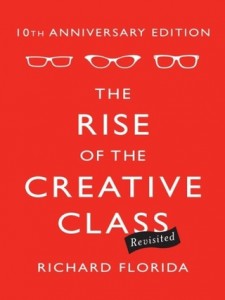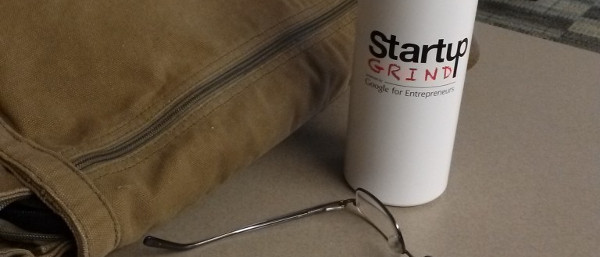At the beginning of the course we each chose a book we were going to read, summarize as well as post a video about the main points. The three books we had to choose from were The Rainforest by Victor Hwang and Greg Horowitt, Startup Communities by Brad Feld and finally The Rise of the Creative Class by Richard Florida. On Friday the 27th of February we all met at the Lee Honors College to discuss the books we had read and how their views compare to what we have seen in the Chicago, Detroit and Grand Rapids‘ communities. Here is what the group agreed were the main points from Richard Florida’s Rise of the Creative Class.
Florida speaks of a new “creative class,” a group of people that create things for a living. Their main resource exists in their creativity. There are two groups in the Creative Class:
- Super Creative Core-their main economic function is to create new ideas, technology and content. The core includes people in the science and engineering, architecture and design, education, arts, music and entertainment industries.
- Creative Core-This is a group of creative professional in business, law, health and related fields who engage in creative problem solving.

According to Florida, the Creative Class values individuality, meritocracy and diversity. Individuality refer to how people identify and express themselves. Meritocracy in that people in the Creative Class want to be judged based on their hard work and achievement. And finally diversity refers to how they prefer an environment open to differences.
Florida also mentions the 3 Ts that make a city stay ahead of the creativity curve. The 3 Ts being technology, talent and tolerance. Technology refers to the the presence of tech start ups and different kinds of technology in a city. Talent is the number of people with skills and ability to work. And tolerance refers to how open the community is to different kinds of people and ideas. Tolerance was noted as the most important as it ties in with the subject of diversity and being inclusive, which we also saw from the other book, Startup Communities. According to Florida, tolerance is measured by the size of the LBGT community in a city.
In the book, Florida also speaks of how the arts are so alive and play a huge role in Austin’s start up community. It will be interesting to see this for ourselves as we travel to Boulder and Austin but more importantly to examine how all the concepts brought up in the books compare to what we actually see there.
